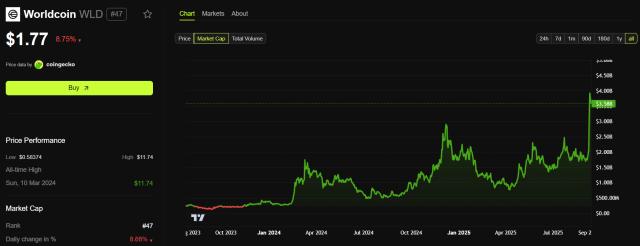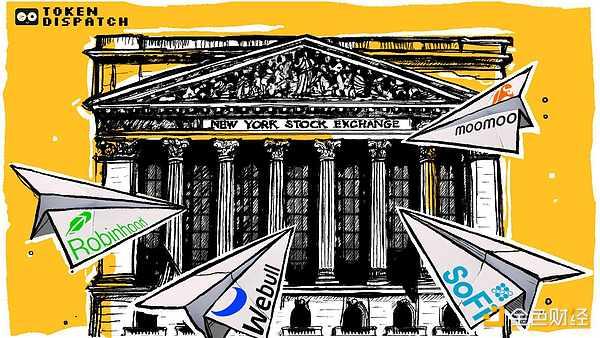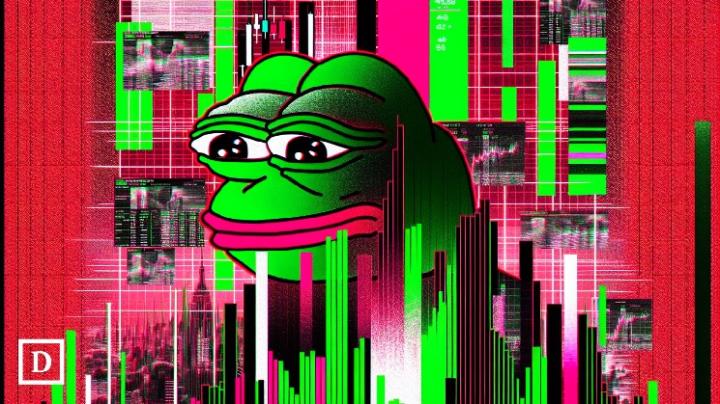Original article by Odaily Planet Daily (@OdailyChina)
Author | CryptoLeo (@LeoAndCrypto)
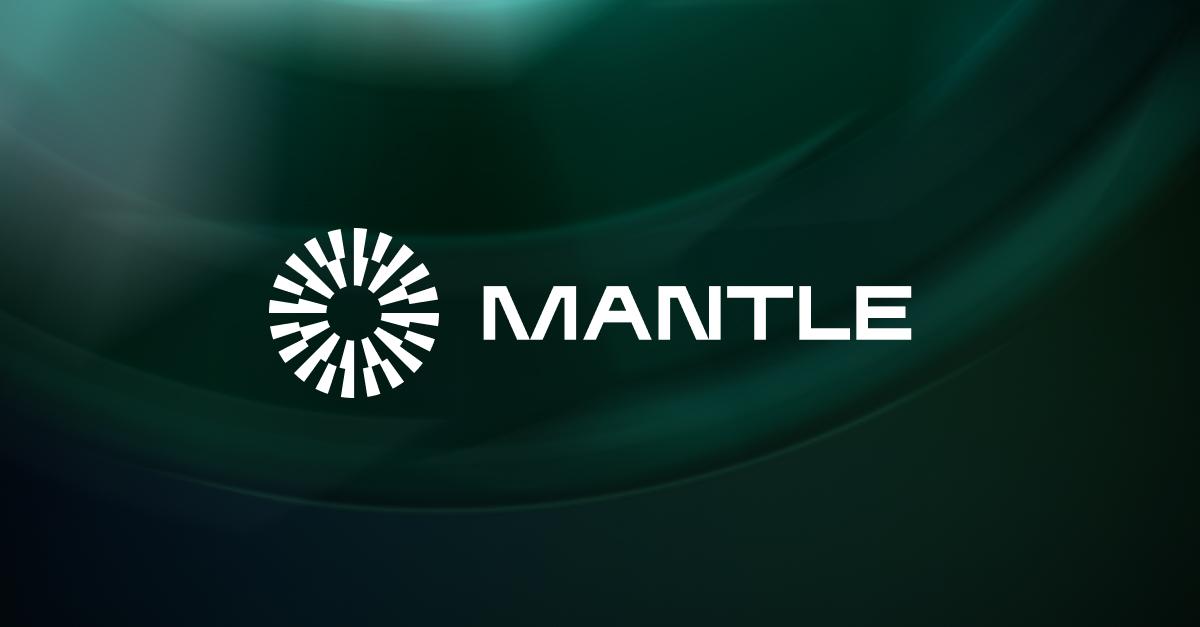
Overall, the development of Ethereum L2 in 2024 was not very smooth. From the early-year Starknet (STRK) to the mid-year ZKsync (ZK) airdrops, they brought a small boom in reputation for Ethereum L2, but they were ultimately no match for the plunge and departure of users after claiming the airdrops.
For a long time after the airdrops, the on-chain data and token price trends of Zksync and Starknet were not satisfactory, and there were even data showing that "only a few addresses had funds bridged to Zksync on certain days". Of course, the decline in trading and TVL data after the airdrops is understandable, as most users' data contributions were just for the airdrops, but for the "L2 four kings" projects with huge financing and high expectations, it was a case of high start and low finish.
During this period, Mantle Network, a less "high-profile" L2, overtook others with its high TVL. Mantle Network is a modular Layer 2 Rollups solution built on Ethereum, providing EVM compatibility, super scalability and low transaction fees, and inheriting security from the Ethereum mainnet. Since the launch of its mainnet in July 2023, its token price has risen from $0.5 at the beginning of 2024 to $1.4 at the end of the year. During the two crashes after 2025, while most altcoins fell more than 50%, the fluctuation range of MNT was maintained at around 20%, and the token price remained stable at around $1.
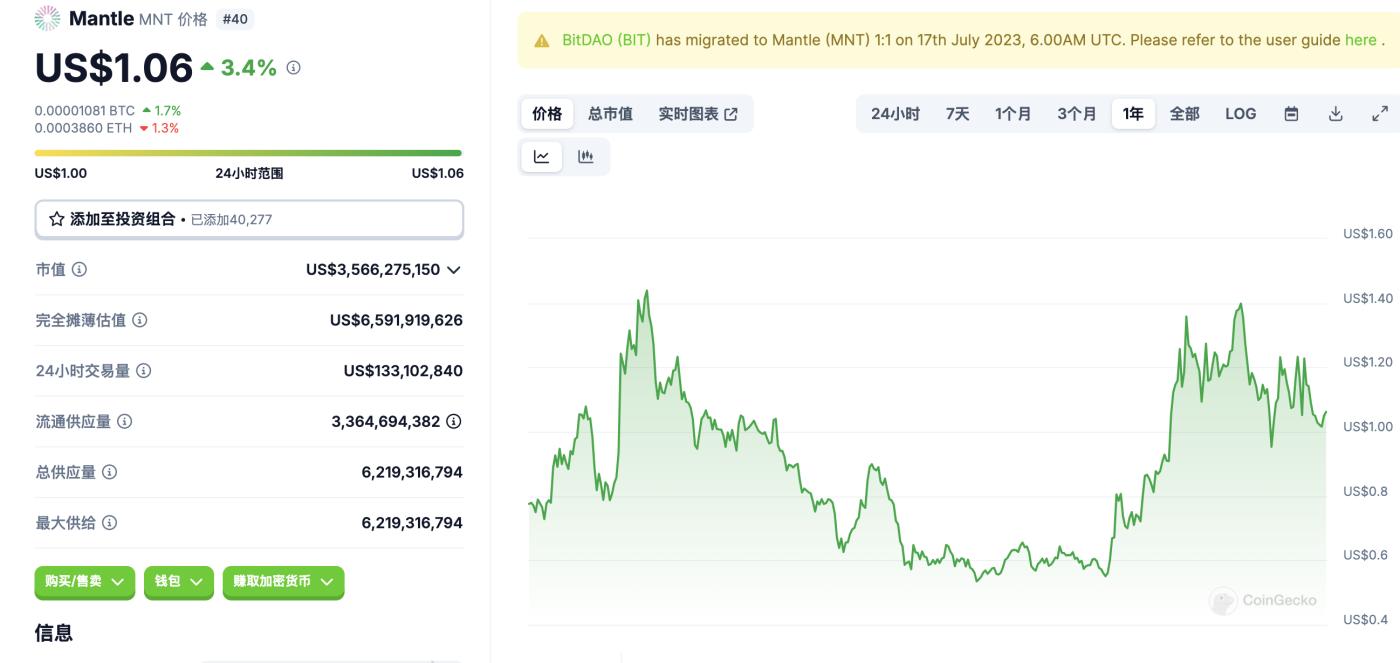
Many people may wonder why the MNT token performed so well, and the following will explain from several aspects what Mantle has achieved in 2024 and how Mantle has become the "dark horse" among the many L2 networks.
In 2024, the Breakthrough Growth and Ecosystem Prosperity of Mantle Network
Macro Level: Technology Development, Ecosystem Growth and Token Data
First, let's look at Mantle's macro performance in 2024, including technology, ecosystem and token:
Enhancing User Experience, Mantle's Technological Development and Upgrades
1. Major Event: Mainnet Upgrade, Mantle Network completed the upgrade of its mainnet v2 Tectonic in early 2024, optimizing Gas fees (providing the lowest Gas fees among Ethereum Layer 2) and improving interoperability with the OP Stack ecosystem. The enhanced features of Mantle v2 specifically include:
- Support for EIP-1559, ensuring end users experience more consistent network fees, reducing price volatility, and potentially saving costs over time;
- Removal of redundant components, including the data transmission layer and Threshold signature scheme previously in Mantle v1, to improve the efficiency of the Mantle network;
- Predictable block times, enhanced node performance, where block generation in the v2 version is independent of transactions and follows a fixed schedule, generating a block every two seconds;
- Block state marking, catching up with other "technology-savvy" L2s, the upgraded version includes the same block marking and block header state as OP stack-based chains;
- Migration of native tokens in L2, MNT token flow will no longer go through the ERC-20 contract, but will be the native token of Mantle, enhancing the liquidity of the MNT token;
- Meta-transactions, enhancing user experience and lowering the threshold for users to participate in Mantle;
- Fee optimization strategy, which can directly provide users with an estimate of the total transaction cost.
2. Technology Updates: Mantle Network is advancing its technology roadmap, collaborating with Succinct SP 1 to launch the first ZK Validity Rollup. The modular design of Mantle's OP Stack combined with the powerful functionality of SP 1's zkVM bridges the gap between user-friendly Optimistic rollup and complex zero-knowledge technology, promoting interoperability, flexibility and standardization, allowing every user to explore its ecosystem more easily and safely.
Leading L2, Mantle's Ecosystem Growth and Token-related Data
Ecosystem Growth: In addition to technology upgrades, Mantle's ecosystem also grew rapidly in 2024. According to the official website, Mantle network currently has 260 ecosystem projects, with DeFi, gaming and infrastructure projects being the majority, reflecting Mantle's focus in 2024. In addition to the prosperity of the mainnet ecosystem, Mantle's modular design and technology updates have also attracted more developers to participate. Mantle launched a testnet incentive program last year, attracting over 5,000 developers globally to participate, deploying 12,000 smart contracts, and breaking through 1 million daily transactions on the testnet.
User Growth: Dune data shows that Mantle network user data has been growing since the beginning of 2024, reaching a peak in September, with over 200,000 new users. The cumulative number of users on the chain grew from 550,000 in January to over 5.02 million by the end of 2024; its network's cumulative transaction volume also grew from $35.77 million in January to $183 million by the end of the year, with its monthly transaction volume peaking at $17.61 million in September.

Token and TVL Data: Mantle's ecosystem witnessed significant user growth and total locked value (TVL) growth in 2024, reaching a TVL of $240 million, demonstrating its market position in Layer 2.
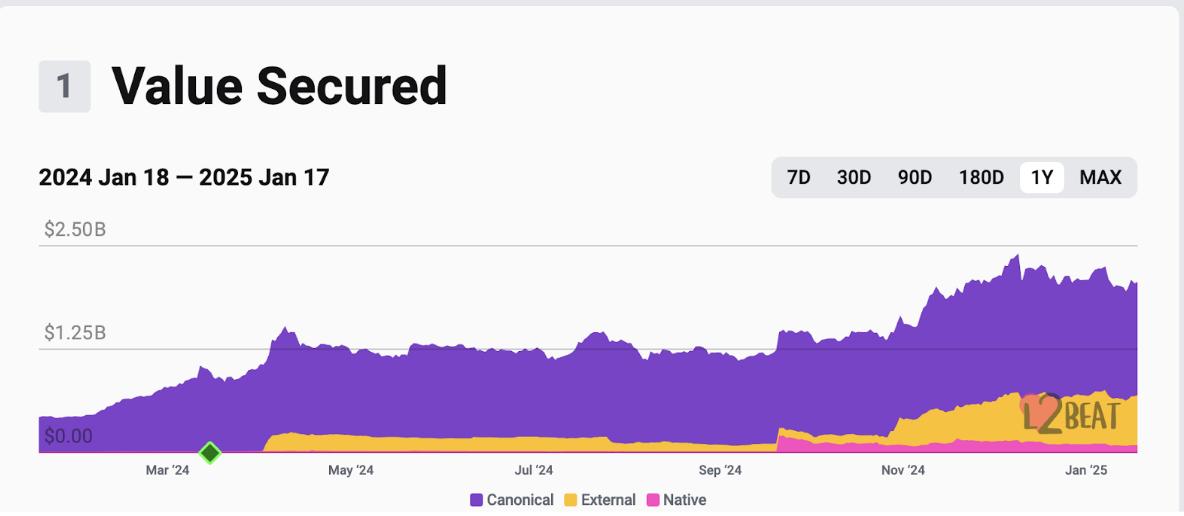
Token Performance and TVL Data: Mantle's native token MNT has shown strong upward momentum in 2024. Data shows that the MNT token price has risen from $0.58 at the beginning of the year to $1.4 at the end of the year. L2 BEAT data shows that its network TVL has also grown from $410 million at the beginning of the year to $2.36 billion at the end of the year. It is the only project in the Treasury that holds over $1 billion in mainstream assets and is governed by Token holders, with its Treasury profits exceeding $50 million this year. In addition to mainstream assets, Mantle's Treasury also holds tokens such as mETH, FBTC and Ethena, as well as equity, which have become a stable reserve for Mantle's MNT token.
Mantle's native token MNT has a very pure token distribution and equity structure, with no large-scale token unlocking in the future, and the non-circulating MNT requires the establishment of governance proposals and Treasury voting to flow into the market. Currently, many L2 token projects are facing huge unlocking, which will affect their token price trends.
Specific Areas, Mantle's Key Focuses in 2024
An important factor driving the growth of Mantle network data is that Mantle seized the mainstream narratives in the crypto industry in 2024. The hottest narrative in the crypto industry in 2024 was staking, with Ethereum re-staking "top" projects including EigenLayer, ether.fi, Swell and others, whose airdrop expectations and high yields and adoption sparked a boom in the re-staking track. At that time, Mantle seized the opportunity of re-staking and became the first Layer 2 network to adopt EigenDA. EigenDA is a data availability solution that allows Mantle to only submit the necessary state roots to the Ethereum mainnet, while storing a large amount of transaction data in EigenLayer.
Leveraging the Staking Track, the Three-Token Model of mETH Protocol
In addition, Mantle also launched its flagship project mETH Protocol in 2024. mETH is an Ethereum liquidity staking and re-staking protocol, which attracted a lot of attention and user participation after its launch. Data shows that the mETH Protocol TVL grew from $363 million in January 2024 to a peak of over $2 billion in March, and was around $1.85 billion in December 2024, an increase of over 5 times.
When talking about the mETH Protocol, we have to mention its three key tokens: mETH, cmETH and COOK. The timeline of the three tokens is as follows:
mETH, a yield-bearing ETH staking token, was launched on December 8, 2023;
COOK, the protocol governance token, was launched on October 29, 2024;
cmETH, the protocol re-staking token, was launched on October 30, 2024.
mETH allows users to participate in staking without locking their ETH, and use mETH for DeFi activities like staking rewards and lending on the Mantle ecosystem. mETH can currently be used on 30+ DeFi protocols on Ethereum and Mantle, such as Pendle, Ethena, Compound, and Euler. mETH currently has an APY of 3.43% and a total staked amount of over 450,000 ETH, with a TVL of $1.566 billion.
cmETH is the re-staking token of mETH, which can be used for re-staking on protocols like EigenLayer, Symbiotic, Karak and related re-staking protocols to earn rewards. This token uses the LayerZero OFT standard, enabling fast cross-chain bridging with no slippage in minutes, providing users with more convenience and yield opportunities. cmETH can explore more yield opportunities compared to regular LRTs, as it can cover multiple re-staking protocols with a single LRT without changing the ETH version. Holding cmETH can provide: staking rewards, re-staking protocol rewards, AVS rewards, collaboration protocol rewards, COOK governance token rewards, and potential airdrops (e.g. EigenLayer airdrop).
COOK is the governance token of the mETH protocol, complementing MNT in the Mantle ecosystem. MNT provides a general incentive and governance framework for the network, while COOK focuses on the specific governance and user incentive mechanisms of the mETH Protocol, granting holders the right to vote on governance decisions such as new feature additions and parameter adjustments. COOK is distributed through various activities and reward mechanisms, such as exchanging "Powder" earned in the Methamorphosis event for COOK. Currently, there are nearly 30 channels where users can utilize cmETH for LP or deposit in related lending protocols to earn COOK.
Combining the booming staking sector, the unique token model and "multi-yield" strategy of the mETH protocol, it has become the best project to participate in this narrative.
Not just Ethereum, exploring higher DeFi yields on BTC
While the Bitcoin ecosystem's development in 2024 was not as strong as Ethereum's, it was still quite "lively", from the hot Runes, Runes, and NFTs at the beginning of the year, to the emergence of BTC L2 and BTC staking protocols like Babylom and Solv, which have also attracted attention to the Bitcoin ecosystem. Mantle invested in multiple Bitcoin ecosystem staking protocols in 2024, indicating its intention to expand into the BTC ecosystem.
Following the popularity of BTCFi, Mantle partnered with the BTCFi protocol Ignition (FBTC) early on, marking Mantle's foray into the BTC ecosystem beyond exploring assets like ETH. FBTC is a 1:1 pegged, cross-chain BTC wrapped token launched by Ignition, aiming to improve Bitcoin's accessibility and utility. Mantle and Antalpha Prime are early supporters of this project, and through the Mantle network, FBTC can be extended to the Ethereum ecosystem. Mantle's network features also allow FBTC to achieve higher usage and yields on its network.
Users can convert their held BTC to FBTC through Ignition. On the Mantle network, FBTC can be used for staking, allowing users to participate in the network's validation and governance processes and earn rewards. FBTC can also be used as collateral or a borrowing asset in some DeFi protocols on Mantle, or provide liquidity to pools to earn rewards. Additionally, FBTC can be used for mining in Mantle's DeFi protocols.
In terms of data, since the launch of FBTC on the Mantle and Ethereum networks in July, its TVL has grown from $67 million to over $1.4 billion. In terms of security, FBTC has received investments from three of the most influential crypto financial companies - Mirana, Ant Alpha, and Galaxy Digital - to build a secure and trustworthy BTC asset for financial use cases.
Compared to the BTCFi protocol Corn (BTCN) ecosystem, which has a TVL of only $490 million, "high yield + security + good data dashboard" makes Mantle a better DeFi use case template for BTC.
"Stronger network + high-quality team", Mantle's game blueprint
In addition to its efforts in DeFi, Mantle Network's modular architecture gives it inherent advantages in the gaming sector, enabling high throughput and the lowest transaction fees among L2s. Especially after the introduction of meta-transactions in Mantle Network's mainnet v2 Tectonic upgrade, users can more conveniently pay transaction fees in dApps.
Besides its high-performance network, Mantle has also assembled a strong web3 gaming team to support its gaming ecosystem. The team consists of members with rich experience in game development and operations, focusing on token economics design, game design, gameplay development, user retention, and operations management for chain games. The team also has experience with Apple Arcade, League of Legends, Ragnarok, and TapTap, equipping Mantle with the capability to support game dApps on its platform. As of the publication, Mantle's ecosystem has launched 26 game dApps, including well-known chain games like Catizen and MetaCene, which can help Mantle build a more active gaming community and attract more user participation.
Geezee, the head of Mantle's gaming team, is a leader with deep understanding of chain games. As a crypto OG, Geezee knows the differences between chain games and DeFi. DeFi requires greater liquidity and broader token trading, while a good chain game developer should not equate game tokens with DeFi tokens. Game tokens should avoid market speculation, and the revenue source should be in-game consumption rather than token sales, as excessive out-of-game trading and liquidity can cause the token's valuation to deviate from its actual value, making the game unsustainable. Mantle's "high-performance network + high-quality team and leadership" allows it to accurately invest in chain game projects and develop its gaming ecosystem.
Expanding Outward, Mantle's 2024 Investments and Incubation of Quality Projects
In summary, while Mantle was dedicated to the narratives of staking, BTC, and chain games in 2024, its outward investment and incubation of projects in its ecosystem also played a crucial role in its steady progress. Mantle's ecosystem investment fund was very active in 2024, and the data shows that Mantle EcoFund and Mantle Network have funded a series of quality projects in the following areas:
Bitcoin Ecosystem and Staking Sector: Re-staking protocol Renzo Protocol (January), Bitcoin re-staking protocol Lombard (July), Bitcoin staking protocol SatLayer (August), Bitcoin re-staking network Pell Network (October), Bitcoin staking protocol pumpBTC (October), Bitcoin L2 network Mezo (July);
Infrastructure: Multi-chain wallet DreamOS (March), Zero-knowledge startup Lagrange (May), Loyalty points trading protocol Pichi Finance (August);
Stablecoin Products: Stablecoin issuer Agora (April), Stablecoin protocol Usual (April);
DEX: DEX aggregator ODOS (August);
Gaming and AI Tracks: Chain game MetaCene (March), Chain game + AI agent protocol Blade Games (May), Decentralized AI infrastructure Gaia (May), Gaming platform B3 (July).
Overall, many of the projects that Mantle invested in in 2024 are leading projects in their respective fields. These projects have close cooperation with Mantle, driving the growth and innovation of the Mantle ecosystem, increasing its market share and application diversity in areas such as DeFi and blockchain games, and also promoting the growth of its on-chain data and user base.
Looking ahead to 2025, continue to seize the hottest narratives, and advance on-chain and off-chain in parallel
In addition to the staking track, the AI+Crypto narrative at the end of 2024 also drove further development of on-chain finance. The development of AI and crypto are interdependent, and breakthroughs in AI will bring breakthroughs in on-chain finance. As mentioned earlier, in addition to developing on-chain finance, Mantle is also increasing its resource investment in the AI field, using artificial intelligence to achieve new transformations in DeFi, bringing more possibilities to on-chain finance.Not only developing on-chain finance, 2025 will also be a critical moment for deploying RWA. Mantle's integration with AUSD (Agora's US dollar stablecoin, supported by cash, US Treasuries and overnight repurchase agreements) also marks a major achievement in its ecosystem - introducing a secure institutional-grade stablecoin for Mantle and expanding the use of institutional-grade financial products. In addition, Mantle's enhanced index fund institutional-grade compliant product will be launched in Q1, paving the way for the RWA track.
The inauguration of "Crypto President" Trump in 2025 will also drive further development of crypto, and value-type Tokens will become the most favored investment target, and Mantle's "golden shovel" attribute also makes it the best choice among value-type Tokens.
In 2025, Mantle will continue to focus on DeFi, BTC and AI, whether for Builders or users, everyone can find the industry's hottest narratives and more suitable applications on Mantle.




